 
AIKEN, S.C. — The Savannah River Site’s (SRS) liquid waste program has processed more than 15 million gallons of radioactive salt waste since 2008 through the work of three major facilities.
To reach this milestone of 15 million gallons processed, SRS has relied on the Salt Waste Processing Facility (SWPF) for the past three years, along with the past performance of the Actinide Removal Process/Modular Caustic Side Solvent Extraction Unit (ARP/MCU) and Tank Closure Cesium Removal (TCCR).
Radioactive liquid waste is generated at SRS as byproducts from processing nuclear materials for national defense, research, medical programs, and for NASA missions. The waste — totaling 33 million gallons — is stored at SRS in two groupings of underground waste tanks known as tank farms.
Jim Folk, DOE-Savannah River assistant manager for Waste Disposition, said waste is being safely removed from the aging tanks and the site’s treatment of liquid waste is moving forward.
“We are now processing more waste faster, further reducing the risk to people and the environment,” he said.
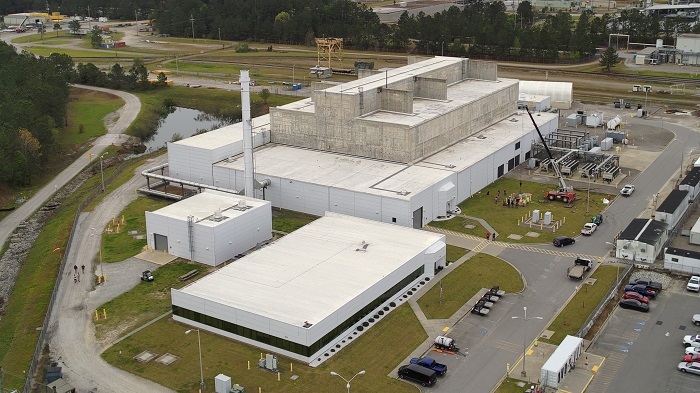 In its first three years of operation, the Salt Waste Processing Facility processed approximately 7.5 million gallons of tank waste, significantly contributing to the liquid waste program’s output of 15 million gallons of radioactive salt waste since 2008.
In the fiscal year ending Sept. 30 last year, SWPF set a single-year record by processing nearly 3.2 million gallons of radioactive salt waste. This facility was the final piece needed to finish treating and disposing of the liquid waste.
SWPF separates and concentrates the highly radioactive waste — mostly cesium, actinides and waste slurry — from the less radioactive salt solution. The process begins by transferring the waste from H Tank Farm to SWPF, where it undergoes a two-step cleanup process.
The first step, known as the alpha strike, removes actinides, such as uranium and plutonium, from the waste. The second step, known as caustic side solvent extraction, is designed for the removal of radioactive cesium.
After the separation process is completed, the concentrated high-activity waste is sent to the nearby Defense Waste Processing Facility (DWPF). There, the waste is combined with sludge waste, immobilized in glass and stored in stainless steel canisters in reinforced, underground vaults called Glass Waste Storage Buildings (GWSB). The canisters will be safely stored in the GWSBs until a federal repository is established.
The decontaminated salt solution from SWPF is mixed with dry materials to create a grout at the nearby Saltstone Production Facility (SPF) for disposal onsite. The grout is pumped from SPF into Saltstone Disposal Units. There, the grout solidifies into a monolithic, non-hazardous low-level waste form called saltstone.
Dave Olson, president and program manager of Savannah River Mission Completion (SRMC), EM’s liquid waste contractor at SRS, said that SWPF is now the facility in the SRS liquid waste program that will treat most of the volume of the waste in the tanks.
“SWPF operates at a much larger scale than earlier salt waste processing facilities,” Olson said. “We continue to engineer improvements at SWPF that we expect to help us achieve even greater production goals.”
SWPF’s radioactive commissioning began October 2020. In its first three years of operation, SWPF has safely processed nearly 7.5 million gallons of tank waste.
To reach these levels, optimizations were made to enhance the facility’s existing design capabilities. These improvements are already demonstrating that SWPF requires less downtime for maintenance, which means more time for production. SRMC’s planned modifications will help boost the system to process even greater quantities, moving toward the processing goal of 9 million gallons each year.
ARP/MCU Processes First Salt Batches
The forerunner to SWPF was ARP/MCU, which began operations in 2008. ARP/MCU were designed as a demonstration project to show that salt waste in the high-level waste tanks could be separated from the more radioactive constituents.
Although ARP/MCU were expected to operate temporarily, the facilities performed well for 11 years before suspending operations in 2019 to prepare for startup of SWPF. During their lifetime, ARP/MCU processed 7.4 million gallons of radioactive salt waste.
TCCR Supports Processing
The TCCR project, which operated from fiscal year 2019 until the project was suspended in 2022, consisted of a self-contained ion exchange process for the removal of cesium from the liquid salt waste to provide a supplemental treatment capability. TCCR removed cesium from more than 371,000 gallons of tank waste.
The high-level waste constituents, such as cesium, must be removed from the tanks before the tanks can be operationally closed and removed from service. Cesium’s characteristics make it a top priority for removal.
-Contributor: Jim Beasley
 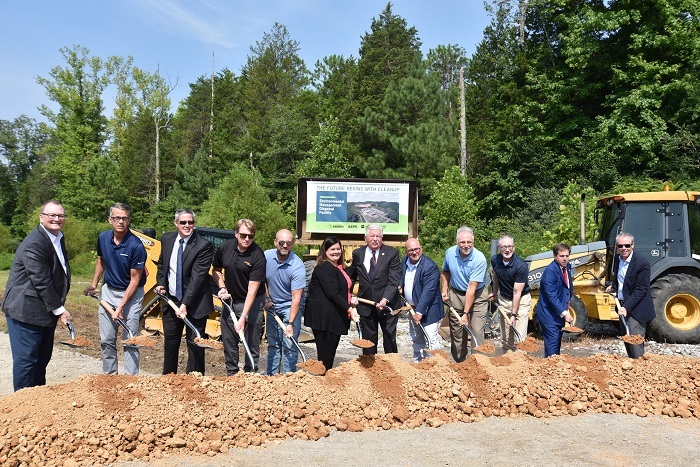 Leaders from the DOE, U.S. Environmental Protection Agency and Tennessee Department of Environment and Conservation break ground on a new disposal facility in October 2023. Representatives from those organizations worked together to finalize a record of decision for the Environmental Management Disposal Facility project that enabled the facility’s site preparation to begin.
OAK RIDGE, Tenn. — The U.S. Environmental Protection Agency (EPA) recently released final figures for 2023 that show Oak Ridge is maintaining its position as the national pacesetter for cleanup across the federal government.
This is due in large part to a recent regulatory framework among the Oak Ride Office of Environmental Management (OREM), contractor UCOR, EPA and the Tennessee Department of Environment and Conservation (TDEC) that’s ushering in a new chapter of accelerated cleanup.
Since implementing the framework in 2020, OREM and UCOR have started and completed the most remedial actions, or restorative cleanup tasks, of any of the 175 federal cleanup sites nationwide.
The EPA reports its progress annually to Congress by tracking completed decision documents and remedial actions.
In fiscal years 2020-2022, Oak Ridge accounted for 61% of DOE's completed actions and 20% of all completed federal facility remedial actions nationwide.
OREM maintained momentum with its remedial actions in the fiscal year that ended Sept. 30. During that period, EPA reported 24 completed remedial actions across the nation, 10 of which came from OREM, accounting for 41% of the nation’s total.
“These remarkable numbers validate our belief in how special Oak Ridge is,” OREM Manager Jay Mullis said. “These results are possible through a tremendous workforce, supportive community and regulators who are committed to advancing cleanup in a meaningful and impactful way.”
 EM workers load debris from the Low Intensity Test Reactor demolition project, completed last year, at the Oak Ridge National Laboratory. Oak Ride Office of Environmental Management and UCOR were responsible for addressing 80,700 tons of debris in 2023, accounting for 88% of the debris addressed in completed remedial actions nationwide.
The framework aids decision-making and approvals needed to conduct cleanup operations at the three major cleanup sites on DOE’s Oak Ridge Reservation: East Tennessee Technology Park, Oak Ridge National Laboratory and Y-12 National Security Complex.
Management representatives from each organization — OREM, EPA, TDEC and UCOR — serve on a leadership team that sets programmatic goals for the cleanup mission. These goals are communicated to the staff through a selected group of employees identified as the emerging issues team. Designed to identify potential roadblocks and enable resolution on staff-level issues, these teams work cooperatively to resolve regulatory challenges and improve communication so the agencies can make protective, timely decisions.
Through this structure and steady progress in the field by employees, OREM and UCOR have accomplished remarkable achievements.
In 2023, OREM and UCOR were responsible for 84% of the total volume of soil remediation, 88% of debris and 100% of treated wastewater and liquid waste for completed remedial actions nationwide.
Those tallies equate to 740,000 cubic feet of soil, 80,700 tons of debris and 51,000 gallons of wastewater and liquid waste.
In addition to those remedial actions, OREM completed one decision document in 2023. EPA reported seven total completed decision documents in its southeast region that includes the Oak Ridge Reservation.
-Contributor: Ben Williams
  Participants in a discussion on improving protection, use and access of sacred sites by tribal people gather for a photo.
DENVER — EM recently brought together tribal people whose ancestors once occupied its cleanup sites for a first-of-a-kind discussion focused on improving protection, use and access of sacred sites by tribal people.
Considering tribal perspectives on sacred areas is required by DOE when the Department’s actions may have an impact on traditional and cultural ways of life.
The White House Council on Native American Affairs recently released a guide for federal agencies on best practices related to sacred sites, including consultation, co-stewardship, accountability, capacity, access, protection, confidentiality, training and public outreach.
“This conversation is a model for collaborating with tribes,” said Ira Matt, assistant director for Indigenous Engagement at the White House Office of Science and Technology Policy and director for the Advisory Council on Historic Preservation’s (ACHP) Office of Tribal and Indigenous Peoples.
Matt added his expertise to the discussion by providing an overview of relevant legal authorities and guidance documents that inform sacred sites management. He was supported by Kelly Fanizzo, deputy counsel for the ACHP, who gave a briefing on data management protocols for sensitive information, and gathering and incorporating indigenous knowledge.
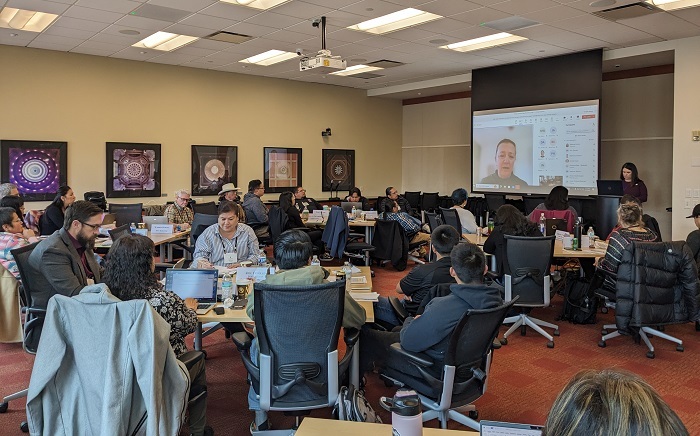 A view of the discussion about improving protection, use and access of sacred sites by tribal people.
“The tribes we work with at EM have been engaged for many years and have the expertise to be leaders in this area,” said Jill Conrad, EM tribal affairs advisor. “Already, we are benefiting from tribal knowledge in assessing and bolstering a rare plant on the Hanford Site that is important to tribal people.”
Hanford was the aboriginal home of many tribal people due to its proximity to the Columbia River and important sacred areas. During the White House Tribal Nations Summit, U.S. Energy Secretary Jennifer Granholm announced that she signed an interagency memorandum of understanding with the U.S. Department of Interior to work with tribes on co-stewarding Rattlesnake Mountain, a sacred site located within the Hanford Site. EM has been meeting with tribes to listen to their concerns and understand what role they want to play in co-stewarding the mountain. This is the first memorandum of understanding on sacred sites for DOE.
At the meeting, tribal and EM representatives talked about the opportunities and challenges to access and use of sacred sites. There has been progress in establishing protocols specifically for tribal people visiting their sacred sites that consider sensitivities of the religious ceremonial nature of some visits.
EM has six field offices with cooperative agreements to support tribal involvement.
Representatives of the Yakama, Umatilla, Nez Perce, Wanapum, Sho-Ban, Pueblo de Ildefonso, Pueblo de Jemez, Pueblo de Santa Clara, Pueblo de Cochiti, Pahrump Paiute, and Santa Ynez Band of Chumash participated.
-Contributor: Jill Conrad

EM leadership at the U.S. Embassy in Paris. Pictured, left to right, Greg Sosson, EM associate principal deputy assistant secretary for field operations; Jeff Avery, EM principal deputy assistant secretary; and Connie Flohr, manager, Idaho Cleanup Project.
EM Principal Deputy Assistant Secretary Jeff Avery and Idaho Cleanup Project team members traveled to France last week to visit Orano and Alternative Atomic Energies Commission (CEA) facilities and meet with the French National Radioactive Waste Management Agency (ANDRA).
Their trip follows a visit to France by EM team members last year, setting the stage for a greater opportunity for EM to learn about how France disposes of nuclear waste to assess how these lessons learned might be applied to EM’s mission, particularly at the Idaho National Laboratory (INL) Site.
“The U.S. and France have a long history of collaboration dating back to the origins of our country and I am excited about the potential of this visit to continue to solidify our collaborative activities,” Avery said.
The team also traveled to Normandy, where they visited Orano’s Research Hall of Beaumont-Hague, Temis and Orano’s large reprocessing plant in La Hague. La Hague treatment site is now the world leader in the field of reprocessing used fuel and serves as a technological model for many countries, as well as a source of continuous innovation.
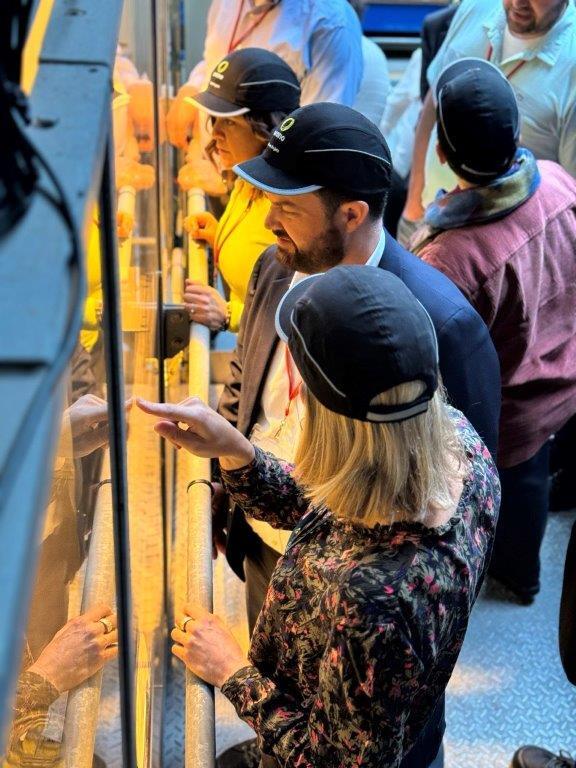 |
|
EM Principal Deputy Assistant Secretary Jeff Avery is pictured at Orano’s Research Hall of Beaumont-Hague in Normandy, France. |
 The EM team visits the Dem&Melt In-Can vitrification system at the Alternative Atomic Energies Commission Marcoule site.
The EM team visited the Marcoule site in south France to view CEA’s vitrification pilot facility, and they met with Science & Technology Institute Director Christophe Joussot-Dubien. This visit was important to EM for evaluating vitrification capabilities to assess potential applicability for treatment of calcined high-level waste at EM sites, including the INL Site.
EM is also exploring vitrification technology across the U.S.
Avery recently visited Catholic University, one of the leading institutions with a cutting-edge laboratory focusing on safe waste immobilization.
In Texas, EM leaders and other subject matter experts recently visited Veolia’s GeoMelt Nuclear Waste Vitrification Facility to understand more about possibilities to vitrify legacy waste. That groundbreaking technology could help EM make low-level nuclear legacy waste safer, more cost effective and more efficient to treat and dispose.
France’s significant contributions to the radioactive waste management field are of particular interest to EM. They include the deactivation and decontamination of legacy nuclear sites; decommissioning and dismantling of facilities; remediation, including groundwater and soil; long-term waste management solutions; and workforce development and stakeholder engagement.
EM upholds a memorandum of understanding with ANDRA that provides a framework for cooperation between the U.S. and France in radioactive waste management, including issues relating to repository disposal technologies, geologic and engineering studies, decommissioning approaches, groundwater and soil remediation, and interim storage of spent fuel.
A joint statement by the United Kingdom, France, Canada and the U.S. declares their commitment to continue building their longstanding collaboration of cleanup of nuclear legacy sites. The statement was issued during the Waste Management Symposia in Phoenix, Arizona, last year. EM will meet with leaders from France and other countries at this year’s symposia from March 10-14.
“I believe that international partnerships help all of us solve our remaining challenges to environmental cleanup by enabling the sharing of best practices, allowing greater leverage of science resources and providing opportunities to accelerate innovation,” Avery said in closing during a meeting with Orano.
 
Editor's Note: Founded by the National Society of Professional Engineers in 1951, National Engineers Week is dedicated to ensuring a diverse and well-educated future engineering workforce by increasing understanding of and interest in engineering and technology careers.
In this issue of EM Update, we highlight the contributions of one of five engineers we’ve interviewed across the EM complex this year. Read the other interviews here.
 EM features Kirk H. McDaniel, confinement ventilation engineer with the Carlsbad Field Office. McDaniel’s engineering career spans over 30 years, and at the Waste Isolation Pilot Plant (WIPP), he was part of the start of the nation’s first licensed nuclear repository for transuranic waste. As a cognizant system engineer, he had the opportunity to work on multiple projects necessary to achieve operational readiness for opening of the WIPP facility.
McDaniel’s expertise in underground mine design, mine safety and training, regulatory compliance and ventilation is unique within EM and the Carlsbad Field Office. As McDaniel put it: “While I originally came to WIPP for a job, what I got was an adventure.” More below of his Q&A and his part in making history at EM.
1. When did you begin working at the site and what got you interested in the cleanup mission?
I began working at the WIPP site in 1993 as a mining engineer. As a cognizant system engineer (COG) for the underground repository, I played a critical role in the overall success of the facility. I became thoroughly invested in, and a vocal champion of, the WIPP mission both internally and externally. We were going to accomplish something never before attempted opening the world’s first licensed nuclear repository for transuranic (TRU) waste. We succeeded. I was, and am, proud to have been a part of the newly operational WIPP project and surrounded by other “WIPPsters” who would accept nothing less that total mission success.
2. Can you tell us a little about a project you have worked on?
As the COG for underground ventilation, 1993 to 2002, I had the opportunity to work on multiple projects necessary to achieve operational readiness for opening of the WIPP facility. This included creating and promoting multiple first-generation technologies needed to install one of the most advanced ventilation remote monitoring, modeling and control systems ever up to that time. I was responsible for the design and installation of a new mine ventilation fan to increase operational availability. I was able to create simulation models of the WIPP facility to identify and mitigate bottlenecks. I was responsible for the conceiving of and overseeing the design, construction and testing of the dry dust filtration unit to remove visible salt dust from the underground air streams in order to improve worker safety. The best and most fun project I worked on was collaborating on, and teaching, an unofficial training program called, “Everything You Ever Wanted to Know About Underground Ventilation at WIPP but was Afraid to Ask.” This gave me the opportunity to educate hundreds of my peers on the design, subtleties and quirks of the WIPP underground ventilation system. This in turn significantly enhanced the level of understanding, safety and appreciation of how my system contributed to the overall WIPP mission.
3. How is your expertise making an impact on an EM project, or the mission in general?
I returned to the WIPP facility in 2021 as a member of the DOE-EM Carlsbad Field Office (CBFO) to provide safety system oversight of the WIPP prime contractor. In the intervening years, I had been involved in mining, tunneling, research, occupational safety and training, technology and innovation, and higher education associated with different types of underground facilities on six continents. My expertise in underground mine design, mine safety and training, regulatory compliance, and ventilation is unique within DOE-EM and the CBFO. I have a positive impact on worker health and safety in the most high-risk aspect of WIPP operations: making holes in the ground for the permanent disposal of TRU waste. My goal is to ensure that risks are understood, managed and mitigated and that everybody goes home safely each day.
4. What would be your message to someone interested in a career with EM?
My experience at WIPP has proven to be a cornerstone of my career. While I originally came to WIPP for a job, what I got was an adventure. I gained far more in return than what I contributed or expected. It was transformative. In addition to honing my engineering and design skills, I learned leadership, ownership, collaboration, teamwork, mentoring and the art of negotiation. I found inspiration and passion for innovation, education and for pushing the boundaries of knowledge. When I left WIPP, I brought these with me. I envisioned the “Mine of the Future,” designed subway systems, built industrial facilities, studied tunnel fires and explored artisanal small mines in remote regions of the globe. I was inspired to pursue and earn a Ph.D. in mining engineering. I taught, trained and mentored others in the hope that I could give back some of what I had learned, and possibly inspire them, too. I returned to EM so that I can apply this expertise toward a lasting legacy in support of the EM mission.

Current Idaho Cleanup Project Manager Connie Flohr set to retire in April
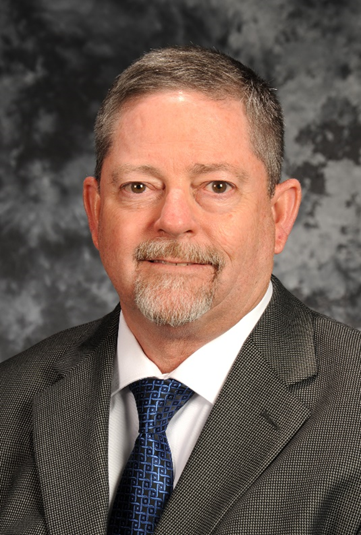
IDAHO FALLS, Idaho — EM has selected Mark Brown as the next Idaho Cleanup Project (ICP) manager, succeeding current ICP manager Connie Flohr, who will retire from federal service in April.
Brown brings a wealth of knowledge and 40 years of experience with nuclear operations and providing oversight of environmental restoration activities.
Currently deputy manager, Brown has been with ICP at the Idaho National Laboratory (INL) Site for more than 15 years. He led the completion of several key projects for ICP, including the completion of spent nuclear fuel transfers from wet to dry storage, completion of targeted waste exhumation from the Subsurface Disposal Area, and most recently in the successful start of liquid radioactive waste treatment at the Integrated Waste Treatment Unit.
Prior to being deputy manager, Brown was the assistant manager for Nuclear and Safety Performance.
He has served in other leadership positions at DOE since 1995, including director of Tank Farm Operations with EM’s Office of River Protection in Richland, Washington.
A proud veteran, Brown was a nuclear submarine officer with the U.S. Navy and holds a Bachelor of Science degree in mathematics from The University of Texas.
|
  Crews with EM contractor Central Plateau Cleanup Company place a large glove box into a metal waste container after removal from the 231-Z Building on the Hanford Site. The glove box was transported to Hanford’s Central Waste Complex for safe, interim storage.
RICHLAND, Wash. — Crews with EM Hanford Site contractor Central Plateau Cleanup Company recently removed a large glove box from the 231-Z Building, a critical step to prepare one of the site’s oldest facilities for demolition.
Glove boxes were crucial to Hanford’s plutonium production mission. They featured leaded windows and glove ports that allowed workers to safely perform various activities with radioactive and chemical materials.
“The safe removal of this equipment is a significant risk reduction accomplishment in the cleanup mission and paves the way for continued cleanup progress at the 231-Z Building,” said Andy Wiborg, EM Projects and Facilities Division team lead for Hanford’s Central Plateau Cleanup Project. “Preparing this aging building for demolition is an important part of our sitewide effort to reduce risk on Hanford’s Central Plateau.”
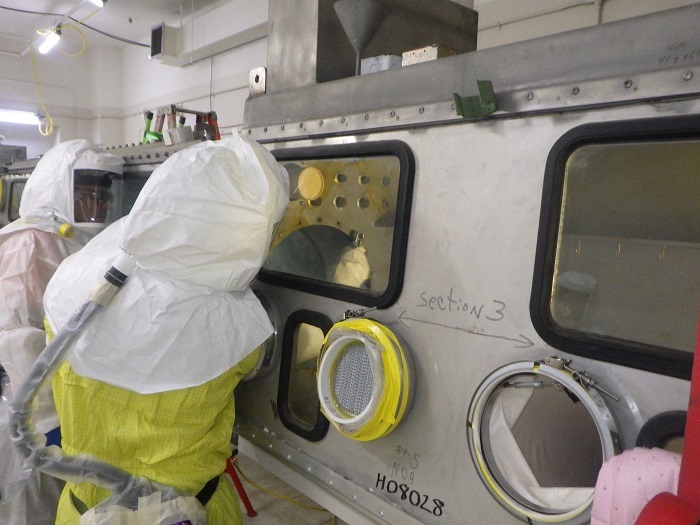 Workers with EM contractor Central Plateau Cleanup Company remove bolts from inside a contaminated glove box at the Hanford Site’s 231-Z Building as part of the process to safely remove the glove box from the facility.
Constructed in 1944, the 231-Z Building served several missions during its 50-year operational lifetime. Its original mission was to refine plutonium as part of national defense operations. During the late 1970s and early 1980s, the building was used to demonstrate different methods of decontaminating equipment.
For a time, the 231-Z Building was also one of the most secure buildings in the nation, when it housed a heavily guarded vault for storing refined plutonium before it was shipped to Los Alamos National Laboratory in New Mexico.
Removing the stainless steel glove box required a series of activities before it could be safely lifted out. Workers carefully separated the glove box into two pieces, applied fixative, and wrapped both in plastic sheeting to prevent contamination from spreading when they were removed from the building. Both pieces were removed from the building in two sections. The sections were lifted by crane and placed inside a waste container for shipment to Hanford’s nearby Central Waste Complex for interim storage.
“There are a lot of steps required to keep workers safe while preparing large pieces of equipment for removal and disposal,” said Jeffrey Wilhem, Central Plateau Cleanup Company fieldwork supervisor for the project. “The whole team did an excellent job on this project, completing the work safely and efficiently.”
The 231-Z Building is expected to be ready for demolition by the end of September, with demolition activities scheduled to begin in 2025.
 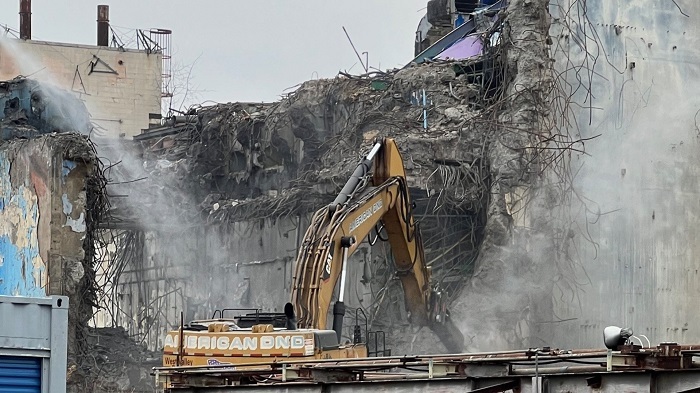 Demolition equipment using a new automated quick coupler deconstructs the wall of a cell within the Main Plant Process Building at the West Valley Demonstration Project.
WEST VALLEY, N.Y. — EM and its cleanup contractor at the West Valley Demonstration Project (WVDP) used innovative thinking to improve safety and efficiency and save taxpayer money by acquiring new automated tools for demolition equipment.
“The WVDP team uses diversity, collaboration and inclusion to its advantage when developing innovation solutions during cleanup activities,” EM West Valley Project Management Assistant Director Stephen Bousquet said. “Combining their differences and strengths helps the team improve safety, increase efficiency and reduce costs.”
The new tools, known as quick couplers, feature an advanced automatic coupling system that enables an operator to change quickly between various attachments used in cleanup from inside the cab of an excavator while conducting demolition work on the Main Plant Process Building at West Valley.
With this new technology, an operator can change the attachments, such as a hydraulic hammer or shear, within a few seconds without worrying about leaks, kinked hoses, hydraulic issues or misalignment.
Previously, when an operator needed to switch an attachment, the equipment had to be shut down and workers removed the attachment and hydraulic hoses manually. This takes time and exposes workers to industrial and radiological hazards.
During demolition, an operator may change attachments several times per day. This innovative tool increases versatility and efficiency with no oil or hydraulic spills, which saves time and money, and protects the environment.
“Anytime we can improve safety it’s a win-win for everyone. The WVDP team is always finding innovative ways to challenge today and reinvent tomorrow,” said Tom Dogal, facility disposition manager with CH2M HILL BWXT West Valley, EM’s West Valley cleanup contractor.
The Main Plant is one of the last major facilities remaining at West Valley. Its successful demolition will further reduce environmental risks and position the site for the next phase in cleanup. The demolition is expected to be completed in the fiscal year that begins this October.
-Contributor: Joseph T. Pillittere

AIKEN, S.C. — EM workers at the Savannah River Site (SRS) reconfigured equipment for changing mission needs at H Canyon, a testament to the flexibility of the chemical separations facility that is more than 75 years old and the only one of its kind in operation in the United States.
As a result of bringing an electrolytic dissolver online, EM team members at H Canyon needed to reconfigure other equipment to continue the existing mission. This reconfiguration was completed to maximize planned operations for this fiscal year, which ends Sept. 30.
“Mission needs dictated that we dissolve Material Test Reactor (MTR) fuel at the same time as we are dissolving Fast Critical Assembly (FCA) reactor fuel,” said James Therrell, manager of Environmental Management Mission Planning. “This flexibility will ultimately allow us to safely meet our long-term processing needs for spent nuclear fuel.”
 |
|
A fuel insert is raised from a chemical dissolver in the Savannah River Site’s H Canyon. Removing the insert allows for a different type of fuel insert to be placed in the dissolver. |
The employees reconfigured one of H Canyon’s two chemical dissolvers for use with the MTR fuel. Dissolution involves lowering the fuel into the dissolver to dissolve the aluminum-clad fuel using a nitric acid solution.
“The chemical dissolvers have to be configured with the right sized insert to fit the fuel,” said H Canyon Facility Manager Matt Arnold, an employee of the site’s managing and operating contractor, Savannah River Nuclear Solutions. “The inserts are specifically designed for each type of fuel and help lower the fuel into the dissolver slowly, allowing it to be dissolved from the bottom, up.”
Those dissolvers were most recently used to dissolve two different kinds of aluminum-clad fuel from the MTR and the High Flux Isotope Reactor. Although these two types of fuel are both aluminum clad, they are shaped differently due to their unique bundle configurations.
Meanwhile, an electrolytic dissolver will be used for the FCA fuel. That dissolver adds electricity to the dissolution process for the stainless-steel-clad fuel.
H Canyon recently installed that dissolver as part of a new mission to process the FCA fuel, which came from the Japan Atomic Energy Agency. Japan and the U.S. removed plutonium and highly enriched uranium from the FCA reactor in 2016, fulfilling a commitment made at the 2014 Nuclear Security Summit.
The plutonium fuel from the FCA is currently stored onsite and will be transferred to H Canyon for processing once workers finish preparations for the dissolution work. H Canyon last ran an electrolytic dissolver from 1969 to 1980 as part of previous missions.
After the FCA campaign, the electrolytic dissolver can be used for dissolution for other non-aluminum based spent fuels, helping advance DOE’s nonproliferation mission. H Canyon’s current mission is to dissolve spent nuclear fuel currently stored in an underwater storage facility at L Basin.
Arnold said that changing the inserts on the dissolver is not an easy process. Since all work in the canyon must be done using remote cranes to protect workers from radiation, months of planning, preparation and coordination among departments are needed before the actual dissolution work can be performed.
Therrell said the reconfiguration was completed safely and successfully thanks to the hard work from current employees.
“But also thanks to the engineers who designed this canyon back in the early 1950s,” he said. “It continues to amaze me that their foresight allowed the canyon to be the flexible and adaptable facility it is to this day.”
Both the chemical and electrolytic dissolving processes produce a liquid that is sent through the site’s liquid waste facilities, where it is made into glass through a process called vitrification. It is then safely stored onsite until a federal repository is identified.
-Contributor: Lindsey MonBarren
  Elected leaders from Washington state, pictured here, were among the more than 750 guests who took part in the Hanford Site’s tour program last year.
RICHLAND, Wash. — Last year turned out to be a banner year for the Hanford Site’s tour program, as more than 750 guests visited the site.
They included U.S. Deputy Energy Secretary David Turk, elected leaders from Washington state and Oregon, congressional staffers and National Governors Association Federal Facilities Task Force members.
There were 92 in-person site tours in 2023 conducted by DOE and Hanford’s prime contractors. The tours offer elected leaders, stakeholders and community members an opportunity to get a firsthand look at the historic cleanup progress underway.
While physical site tours are not open to the public, the Hanford virtual tour website continues to be a success. In 2023 there were 21,797 visitors to the virtual tour website, with 886,342 page views. The immersive virtual experience allows viewers to explore more than 20 Hanford projects, discover over 40 viewable map locations, access internal views of select facilities, and gain up-close views of Hanford locations, some never before seen on a Hanford public cleanup tour. The virtual tour is one of the ways Hanford increases public awareness of its cleanup mission and boosts public engagement.
|